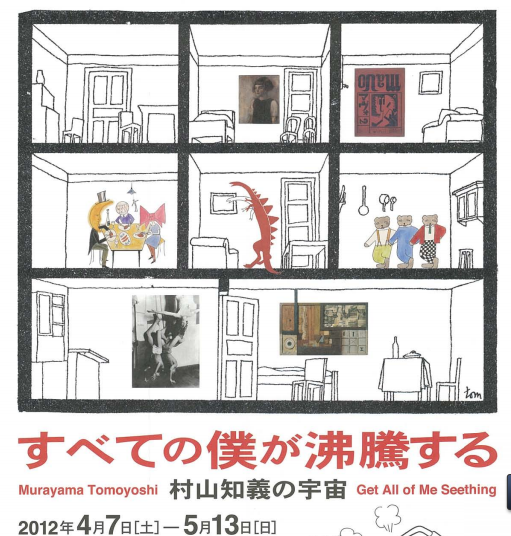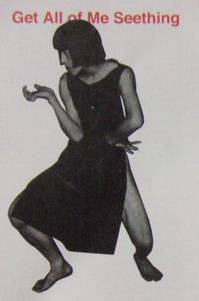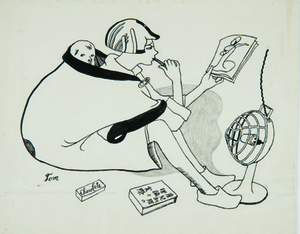Der Lauf der Dinge is a 1987 experimental adventure by Swiss duo Peter Fischli and David Weiss.
Monthly Archives: April 2012
Historical Images of New York City
The New York City Municipal Archives has just released a large gallery of historical photographs to the pubilc. A selection of the images was published by The Atlantic. Many offer a fascinating glimpse at NYC under construction. The quality of these images is very impressive, perhaps timeless. I imagine factors contributing to the image quality include:
- Skill of the photographers
- Use of large format film
- Use of a tripod
- Craftsmanly control of exposure, development, and printing process
- etc …
Strobe Castle
Continuing with the YouTube vignettes, but skipping ahead about 30 years, here’s an intriguing live video of Toronto band Crystal Castles doing Alice Practice which was a hit a few years ago. I shudder to think about the cocktail Alice Glass may need to imbibe before such exhibitions, but the video does at least demonstrate the kind of engaging performance that can be possible with even a very lo-fi approach.
Oddly enough this video reminded me of my early youth: I sometimes played with a high powered strobe light my father used for adjusting the timing of the car engine. It seems no one was very worried about photosensitive epilepsy in those days, though we did have the idea that the strobe might be able to trigger a seizure. I certainly tried out all the possible frequencies more for visual effect than neurological experiment. We sometimes used the strobe to turn the basement into a makeshift disco. This was during elementary school and my interest in art and technology may date to those experiences.
Glam Days
Hopefully this blog will not degenerate into a series of YouTube highlights, but since I broke the ice with the Nina Hagen post, I thought I’d add another peek at an era young viewers are probably not familiar with. Frankly, the beginning of term leads me to seek relaxation on certain days (you might be able to guess specifically which days) and there are times when light entertainment is needed.
First up, “White Punks on Dope” by The Tubes, a tongue-in-cheek send-up of early 70’s glam band excess. You’ll recognize the tune from Nina Hagen’s “TV Glotzer”: Nina borrowed the song but changed the words. Not sure how that would have worked out copyright-wise. Other than being hilarious, this video is a record of the Tubes’ UK tour, which made an impact on early UK punk, or so goes the story.
This dates back to my pre-teen years. I can vaguely recall this catchy tune being on the radio. My family made a trip back home to the UK in the early 1970’s and I can remember watching glam bands on TV, most likely on “Top of the Pops” rather than the more mature “Old Grey Whistle Test”. I also have a surreal memory of some teachers getting our class to dance to Gary Glitter‘s early 70’s glam anthem “Rock and Roll Part 2”. That must have been either grade six or seven.
Two excellent acts of the glam era were David Bowie and Brian Eno (with Roxy Music during Glam). First, a recently re-discovered video of David Bowie in a 1973 Top of the Pops performance of “The Jean Genie” a pun on the name of controversial writer Jean Genet. It seems that the BBC had erased this video tape, but one of the cameramen had saved a copy because it used a television camera customized with fisheye lens. The video showed up on YouTube late last year.
In the final video for today, you can watch Brian Eno, when he still had feathers, playing the tambourine and soloing the VCS3 during his glam days with po-mo art school rockers Roxy Music. The VCS3 was an early commercial synth that had only three oscillators and rather unstable voltage controls. These days a VC3 in good condition will fetch more than £5000.
Ich glotz YouTube
Everyone should know about Nina Hagen.
She wasn’t the first to wear memento mori as a fashion statement: that must go back to Neanderthal times at least. But she may have been the first modern pop star to do so. And she may have been the first to wear pacifier earrings, or perhaps that’s something she noticed a punk doing when she visited London after defecting East Germany in ’76. Legend has it the punks loved Nina. Who wouldn’t? Isn’t that a Diana camera around her neck? This is about 25 years ahead of the toy camera hipstas!
I was 16 years old when I heard her voice. There has never been anyone else quite like Nina.
Point cloud painting with the Kinect
This short video by Daniel Franke & Cedric Kiefer is one of the most aesthetically impressive uses of the Microsoft Kinect I have seen yet. Apparently they used three Kinects. Not sure whether the visuals could be rendered in real time because there is clearly interpolation between the 3D views involved in producing this video. Also for real-time use this probably involves programming in C++, or at least Openframeworks. For anyone interested in the Kinect, it’s worth trying to find out more about what went into producing the video. Some links are given:
onformative.com
chopchop.cc
There’s full quality version of the video available online:
daniel-franke.com/unnamed_soundsculpture.mov
And a ‘making-of’ video on Vimeo:
Here is a statement by the artists:
The basic idea of the project is built upon the consideration of creating a moving sculpture from the recorded motion data of a real person. For our work we asked a dancer to visualize a musical piece (Kreukeltape by Machinenfabriek) as closely as possible by movements of her body. She was recorded by three depth cameras (Kinect), in which the intersection of the images was later put together to a three-dimensional volume (3d point cloud), so we were able to use the collected data throughout the further process. The three-dimensional image allowed us a completely free handling of the digital camera, without limitations of the perspective. The camera also reacts to the sound and supports the physical imitation of the musical piece by the performer. She moves to a noise field, where a simple modification of the random seed can consistently create new versions of the video, each offering a different composition of the recorded performance. The multi-dimensionality of the sound sculpture is already contained in every movement of the dancer, as the camera footage allows any imaginable perspective. The body – constant and indefinite at the same time – “bursts” the space already with its mere physicality, creating a first distinction between the self and its environment. Only the body movements create a reference to the otherwise invisible space, much like the dots bounce on the ground to give it a physical dimension. Thus, the sound-dance constellation in the video does not only simulate a purely virtual space. The complex dynamics of the body movements is also strongly self-referential. With the complex quasi-static, inconsistent forms the body is “painting”, a new reality space emerges whose simulated aesthetics goes far beyond numerical codes. Similar to painting, a single point appears to be still very abstract, but the more points are connected to each other, the more complex and concrete the image seems. The more perfect and complex the “alternative worlds” we project (Vilém Flusser) and the closer together their point elements, the more tangible they become. A digital body, consisting of 22 000 points, thus seems so real that it comes to life again.
VR and the Computer of the 21st Century
I want to make note of a powerfully brilliant paragraph from a highly influential article [1] by Marc Weiser published in September, 1991:
Perhaps most diametrically opposed to our vision is the notion of virtual reality, which attempts to make a world inside the computer. Users don special goggles that project an artificial scene onto their eyes; they wear gloves or even bodysuits that sense their motions and gestures so that they can move about and manipulate virtual objects. Although it may have its purpose in allowing people to explore realms otherwise inaccessible – the insides of cells, he surfaces of distant planets, the information web of data bases – virtually reality is only a map, not a territory. It excludes desks, offices, other people not wearing goggles and bodysuits, weather, trees, walks, the infinite richness of the universe. Virtual reality focuses an enormous apparatus on simulating the world rather than on invisibly enhancing the world that already exists.
It is perhaps superfluous to say that Mark Weiser and his colleagues at Xerox PARC were prescient and that, comparatively speaking, things have gone in the direction of ubiquitous computing, rather than virtual reality. And perhaps this is not surprising, many of the brightest and most interesting human interface researchers were at PARC from about the early 70’s onward. Their work made the future we now see in the largely usable, mobile, embedded, sensor-laden socially-networked devices of recent times.
[1] Mark Weiser, The Computer for the 21st Century, Scientific American 265(3): 94-104 (1991).
村山知義@MOMAK
Don’t forget to go and see the exhibition of works by Tomoyoshi Murayama, easily one of the most unusual and intriguing figures in early 20th century Japanese art, currently on at MOMAK. The show offers a fascinating look at the Japanese avant-garde during the Taisho era. Murayama was a central figure in Tokyo Dada (aka MAVO) of the 1920’s and a highly active artist and designer for his entire life. The exhibition is a rare chance to have a broad and deep look at his entire oeuvre.
From the web page of the Shinagawa Museum of Modern Art:
「20世紀の初めに生を享け、ベルリンでダダや構成主義などの新興芸術を吸収して1923年に帰国、まもなく「マヴォ(Mavo)」や「三科」といったグループの活動を通じて大正末期から昭和初期にかけて日本の近代美術に決定的な影響を与えた村山知義(1901-1977)。…本展は、1920年代に展開された美術の仕事を中心に、その時代背景を伝える国内外の作品・資料を参照しながら村山知義の宇宙的な多様性を紹介する、初めての大規模な個展です。…村山知義が夢みた全方位的な創造力の開放、沸騰の軌跡を検証する本展を、ぜひご覧ください。」
Info about the MOMAK show:
会期: 平成24年4月7日(土)~ 5月13日(日)
開館時間通常の開館時間:
午前9時30分~午後5時(入館は午後4時30分まで)金曜日の夜間開館日
午前9時30分~午後8時(入館は7時30分まで)休館日毎週月曜日
※ただし、4月30日(月・祝)は開館
‘Tom’ doing an expressionist dance.
Humourous sketch (1927) titled「母親になったモダンガール」
Silence – No such thing

Some of you might remember Prof. Clark Lunberry, who visited the zemi as a guest speaker last year. Clark has organized a festival this year in honour of John Cage’s 100th birthday. The festival came to an end recently and Clark has provided is a nice set of images of his installation based on a famous Cage aphorism about silence. You can find the images at Clark’s home page. Highly recommended!

Imaginary soundtrack
Krautfunk instrumental outtake for early 1970’s Italian softcore exploitation film:
This track has been approved by SPAMI (Society for Prevention of Abuse to Musical Instruments).





